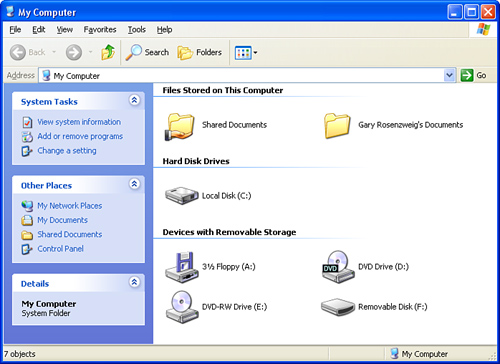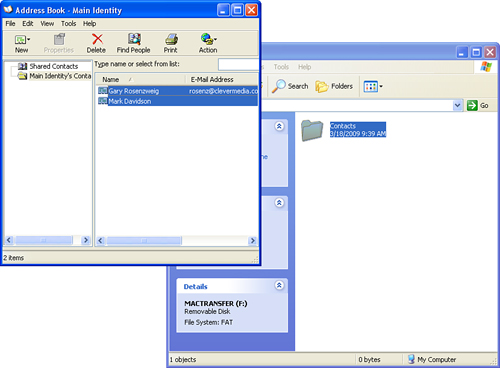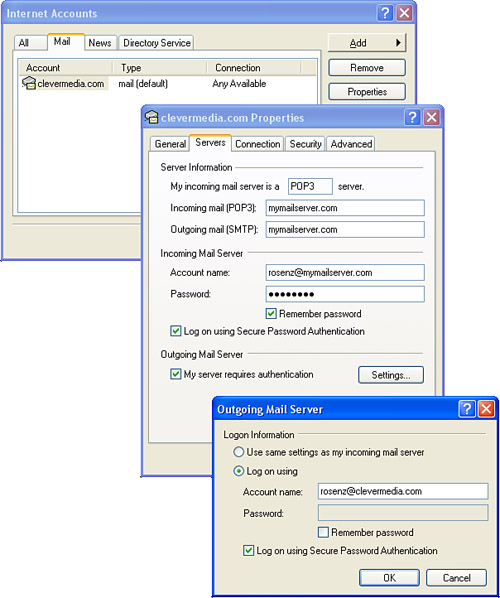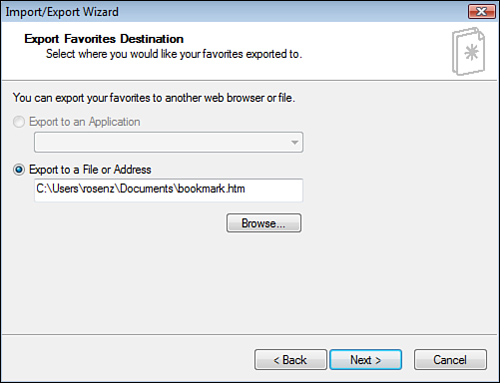Transfer from Windows to Mac
Network Administration - If you switch from Windows to Mac, you will definitely need to transfer your files or other data from your old computer to your new Mac. In this article, we will show you how to transfer files from a Windows computer to a new Mac but do not need to set up a network.
If this is the first Mac, but not your first computer, chances are your old computer will run Windows. And so you will have lots of old files on this Windows computer - such as contact lists, calendars or even browser bookmarks.
And certainly one thing is that you not only don't want to lose those things but also want to transfer them to new computers. There are many methods that can get these files and valuable information from an old Windows computer to your new Mac.
Transfer documents
There are two ways to transfer files from Windows computers to Mac: hard and easy. The hard way is to set up both computers to access a network, making them able to recognize each other and transfer documents.
However, the problem arises here is that the connection between these two computers on the same network is very different and the implementation is very complicated.
In this article we will not cover network connectivity between Mac and PC to transfer files using a simpler method (easy method).
This easy method is to use a USB to copy data files from PC to Mac. The cost of USB is quite cheap, only about $ 10 to $ 40, depending on the size you choose. However, their effects are many, they let you copy data files, share with friends and transfer important files to Mac.
Copy files using USB
When you have a USB drive, the first thing you need to do is format it in a format that your Mac and Windows computers can read. Windows cannot read Mac-formatted discs, but Mac can read Windows-formatted discs. So if it is necessary to reformat the USB, the type of format you need to perform is FAT32.
You can do this by using Disk Utility on Mac, where the required format is MS-DOS (FAT), but it will certainly be much easier to reformat the drive on the computer. Windows calculator. There are times when these USB drives may have been formatted as FAT32 before you buy them at retail stores.
Connect USB to USB port on Windows computer. If you are not formatted in a readable Windows format, you will be asked to reformat now. When you encounter this requirement, perform the reformatting action, but be aware that all the data you have saved on the USB will be erased.
After formatting, you will see the drive displayed inside My Computer on a Windows computer. In Windows XP, what you see is the same as shown in Figure 1, where the USB shown is the F: drive.

Figure 1: In Windows XP you can see the USB is displayed in My Computer
Also in My Computer, you will see a folder with your name followed by 'Documents'. If you have saved all your files in Windows in the document folders, what you need to do here is drag and drop the entire folder into the USB drive.
Then you need to think if there is still a place on your Windows computer that contains the documents to copy. Will you save the files in some other drive, or outside the Documents folder? Think and look for what you can. You may come back later if you do not dispose of this Windows computer immediately.
Note : If you have too many files that exceed the capacity of USB for one copy, you must copy the small parts, like: copy the previous images, then documents, music, .
Then remove the USB by right-clicking on the My Computer window and selecting Eject. Wait a few seconds, then unplug the USB from the slot.
Next, plug the USB into the slot on the Mac. It will appear as a device on the left side of all Finder windows. You can drag and drop documents from here to any folder on the Mac. You can put them all in the "From Windows" folder inside the Documents folder in the user folder.
If you want to bring both photos, videos and music, you can put them in other folders that will be introduced below.
Choose a file transfer method
USB drives not only have a way to transfer files from Windows computers to Macs. Here are some options:
- Full-sized hard disk - Will you buy an external drive to use for Time Machine backups? Before starting, format in FAT32 as you would format a USB drive. Then use the entire drive size to transfer files to the Mac before allowing Time Machine to reformat it for backup purposes.
- Local network— If you can connect both computers to the same network, turn on file sharing on both computers, this is the best method but we do not introduce this article (and will introduce Tell you about the following articles).
- Bluetooth file sharing— If a Windows computer has Bluetooth support, a wireless communication method, you can perform sending and returning files.
- iDisk - If you are a MobileMe user, you can access MobileMe's storage space on both Mac and Windows. Then transfer the files from your Windows computer to iDisk and from iDisk to Mac.
- Email— If you work with email on a Windows computer and on a Mac, consider attaching files to emails and sending them to your own address.
- File-sharing website - Some websites allow you to upload files for free. You can send or share a file your way, from one computer to another. Check out http://yousendit.com, http://www.box.net, http://www.jungledisk.com, and other options.
- Special hardware— If you pay, you can buy a special cable that allows you to connect a Windows computer to a Mac computer. The options we introduce here are Belkin Switch-to-Mac or iTornado.
- Burn a CD— If your PC allows CD or DVD burning and you know how to use it, then you can burn a CD-ROM or DVD-ROM containing all the files in it. This is also a good way to store PC files before discarding it to transfer to Mac.
- Apple Genius - Apple Store provides a free way to transfer files but is not popular because it requires bringing both Mac and Windows computers to another location.
Transfer contacts and schedules
Transferring data files is not too complicated. However, the transfer of contacts, schedules and emails is somewhat difficult.
For each problem, it depends on which program you are using to save this data. With email, some Windows XP users use Outlook, but others use Outlook Express, a completely different program. Others use email programs from third-party software vendors. In Windows Vista, Outlook Express is replaced by Windows Mail.
The same thing happens with Windows Address Book. That's what it's called in Windows XP, but in Windows Vista it takes the new name Windows Contacts.
Transfer contacts
There is an easy way for you to transfer Windows contacts to Mac. The first thing you need to do is find the Address Book or Windows Contacts and run it.
You will then see a list of all your contacts. The goal is to get the entire list to Mac. The procedure may vary depending on whether you are using Address Book in Windows XP or Windows Contacts in Vista.
You can transfer contacts from Windows XP to Mac using the following steps:
- Connect your USB to a Windows computer.
- Create a new folder on the USB. Name it " My Contacts " or something else for you.
- Open that folder in a window, and the Address Book window next to it, as shown in Figure 2.

Figure 2: Contacts in Windows XP display two contacts that are dragged to the previously created Contacts folder on the USB
- Then select all contacts, drag and drop them into the folder. This method will create a bunch of files with the extension .vcf (short for vCard file). This is a standard way of transferring contact information from one device to another.
- Remove USB from PC and plug in your Mac.
- Start Address Book. Select the All Contacts group.
- In the Finder , find the " My Contacts " folder and select the .vcf files in it.
- Drag and drop all .vcf files from the Finder window into the Name column in the Mac's Address Book .
Your new Address Book will now have the .vcf files you bring from Windows.
Transfer schedules
Windows XP does not have a standard schedule program, but Outlook users can own a fairly complete schedule. Windows Vista has Windows Calendar.
With events in Windows Calendar, you can use the same strategy as with Windows Contacts or Windows Address Book. Choose File , Export and you'll get a .ics file , which is a standard schedule format. Make sure not to select any events in the schedule, because when you select only the selected events will export. On the contrary, you get everything.
Then copy that .ics file and transfer it to Mac.
Here you cannot use File , Import to make the .ics file appear. However, you can use a simple method (drag and drop) that .ics file into the iCal window and all events will appear in your new schedule.
Note : Make sure you select the correct schedule to the left of the iCal window. For example, if you have Personal and Work calendars, select the one where all imported events will appear. Or create a new schedule and call it "From Windows" and select that schedule, then all imported events will appear in that schedule.
Transfer email
Mail programs on Mac and Windows are interfaces for managing mail from servers - so email is really popular, it's just a different virtual interface between Mac and Windows.
To switch to Mac, all you need to do is put email settings from your Windows computer and use them to set up Mal on your Mac.
You can copy old emails (with a limited range) from Outlook Express, Windows Mail, or Outlook and transfer them to Mac.
Set up email
If you receive mail on Windows from a program like Outlook Express or Windows Mail, you only need to get the information from the Windows computer to be ready for importing into a Mac computer.
Figure 3 shows the mail settings of Outlook Express. You can get these settings by selecting Tools , Accounts , and clicking the Mail tab. You can then double-click on an account to receive the settings.

Figure 3: Settings in Outlook Express contain the necessary information for Apple Mail.
It is also possible to search server information for incoming mail (POP3) and outgoing mail (SMTP), besides both the ID and password for the Incoming Mail Server and Outgoing Mail Server. You will have to click the Settings button under Outgoing Mail Server to receive those settings. However, you will not be able to see your password, so remember to remember it yourself.
This will logically arrange the Incoming Mail Server, User Name, Password and Outgoing Mail Server information as well as in Apple Mail accounts. Settings and how to get them are completely different between Outlook Express in Windows XP and Windows Mail in Vista.
Transfer old messages
You can use the drag-and-drop method you do with contacts to receive old messages from Outlook Express or Windows Mail to transfer them to Mac.
If you open one of the mail programs that come with this Windows, you can select messages, then drag and drop them into a folder in the USB drive. You can then copy to Mac. They are files with .eml extensions. Each file is a private email.
At first you can't seem to do anything with them in Mail. No drag and drop results. However, you can double-click the .eml file, then the message will be opened in Mail.
From here, you can select Message , Move To and place the messages in one of the existing Mail folders. However, it is necessary to create a specific directory for this purpose.
Thus, transferring Windows email to Mac is easy. However, you can only do it with one letter at a time. So if there is one or several letters, this operation is possible, but with thousands of letters it is impossible.
The better to implement is to use an intermediate component. You can use a program like Microsoft Entourage on Mac, or Mozilla Thunderbird (http://www.mozilla.org/projects/thunderbird/) to import .eml messages into clusters. You can then use the File , Import Mailboxes menu in Mail to import the entire number once.
Note : If you are using Outlook, this is a completely different mail program than Outlook Express, can transfer your Outlook mail to Apple Mail with the help of a third party program like 02M (http:/// www.littlemachines.com/).
Transfer music and photos
To transfer music and photos or other media files from a Windows computer to a Mac, simply follow the suggestions in the first part of the lesson and copy those files from your Windows computer to the USB drive.
Music files on Mac are managed by iTunes and image files are managed by iPhoto. Both of these programs support drag-and-drop import action. This means you can drag and drop an image file from the Finder into the iPhoto library and it will import into iPhoto. The same goes for iTunes.
Windows image organization
What you get when you drop image files into iPhoto depends a lot on what data is stored in those files. For example, if they are original files from the camera, these files will have dates, even location information. iPhoto will select this information and use it.
Splitting them into events can be a bit more complicated. You might be stuck with a big event that includes all Windows images. You can leave them like that, or spend more time organizing them with tools in iPhoto.
Playback issues with music files
Music files also contain a lot of data. An MP3 file usually has artist name, song title, album name and other information. iTunes will use this information to organize imported music files by artist and album.
However, you might be frustrated if you discover some or even all of your music files that can't be played on your Mac. The reason for this is DRM copyright management.
If you imported music files from a CD to a Windows computer in MP3 format, these files will be opened on the Mac. However, if you purchase a music file from an online music service, these files can be protected and can only be opened on a computer that you have registered with that music service. In most cases, it is copy protection for Windows. There is no way to listen to these music files on the Mac because the program requires permission to listen to the song built into Windows.
Transfer Bookmark
Fortunately for us, the browser Bookmark transfer is relatively simple. In Windows, you mostly use Internet Explorer to browse the web. On Mac, you will use Safari.
To get Internet Explorer bookmarks, this depends on which version of Internet Explorer you are using. In IE7, you need to select the Add Bookmark button located below the upper left window. It has a star-like image with a plus sign next to it. One of the options provided to you is Import and Export Bookmarks .
Follow the dialog to export all or some of your bookmarks to a file. Figure 4 shows a step in the export process. After the export is complete, you will see a Bookmark.htm file.
After copying and transferring files to Mac via USB or some other method, you can import them using Safari's File , Import Bookmarks command.

Figure 4: Export your bookmarks from Internet Explorer
Open Windows files on Mac
How to run files that you transfer from Windows to Mac now? Although they have the same windows, icons and mouse, different operating systems often have different ways of running applications.
You are used to opening .doc files in Microsoft Word, .ppt files in PowerPoint. .Exe files are executable files and .wmv files are video files. However, on mac everything is not so.
Document files
If you have .doc files, they will be in Microsoft Word format. You can open them with Microsoft Word on Mac if you have bought Microsoft Office for Mac. However, you can open them in Pages if you have iWork.
If you have Word or Pages, your easiest option is to open them in the free TextEdit program that comes with your Mac. Format in complex documents may be lost but basic formats will be here.
You can also open .doc files with open source office software like OpenOffice (http://www.openoffice.org). Another option is to use the free Google Docs website at http://docs.google.com to import and view files.
Another popular type of document file is the .pdf (Portable Document Format). Sometimes they are known as Adobe Acrobat files, although they can be created with any document creation application.
Opening .pdf files is easy on the Mac, because the Preview application manages them. If you like, you can also download the more complex Adobe Reader at http://get.adobe.com/reader/.
Presentation files
Another type of file may appear to be some presentation files (and certainly PowerPoint presentations if it comes from Windows).
At this time Microsoft Office for Mac is still the best solution with PowerPoint for Mac. However, you can also open PowerPoint files in Keynote if you have iWork. However, because the effects vary between the two programs, you need to do some work to complete the conversion.
You can also use OpenOffice, a demo application, and Google Docs to see the simplest demos.
Spreadsheet files
If you use spreadsheets to work, your spreadsheets here will usually be Excel spreadsheet pages. You can then use Microsoft Excel for Mac as part of Microsoft Office. This may be the best solution if you need to work with Excel spreadsheet pages.
There are several spreadsheet programs from iWork, which are powerful, but quite different from Excel. You will not be easy to move a file back and forth, though it can be done. OpenOffice is closer to Excel if you really need another option.
Video files
The standard video file format in Windows is .wmv file. You cannot run these files on Mac without the need for supporting software. However, the software supporting you to do this is completely free.
Go to http://www.telestream.net/ and download the free Flip4Mac WMV music player. The site also displays a trial version of Flip4Mac WMV Player Pro. If you do not plan to use it to create .wmv files but just watch them, the trial version is more than enough for you.
After installing Flip4Mac WMV you can run .wmv files in QuickTime player and in Safari.
For other formats that QuickTime Player cannot manage, try VLC Media Player, another free download at http://www.videolan.org/vlc/.
Executable files
If you have files.exe, these are Windows executable files. Equivalent are .app files on Mac - but Mac users rarely see the .app file extension.
There is no convenient way to do anything with a .exe file in Mac OS X. It is a Windows program and can only run under Windows operating system. In order to run Windows applications on the Mac you need to use more complex methods that we will introduce to you in another tutorial.
You should read it
- Convert PDF to Word, convert PDF files for free
- How to convert image file to PDF on Windows 10
- How to Convert PDF to JPG
- How to convert WAV format to MP3 using LAME with Audacity
- How to convert HEIC images to JPG / PNG
- How to transfer Windows to an SSD without reinstalling
- How to convert PowerShell script file (.ps1) to .exe by IExpress on Windows 10
- The convert in Windows command
- How to convert PNG images to JPG does not degrade quality
- how to convert a JPG file to PDF with just one operation
- How to convert ESD files to WIM using DISM on Windows 10
- How to convert AI files to PNG, JPG without software






 How to transfer data from Windows to Mac OS X quickly
How to transfer data from Windows to Mac OS X quickly 10 ways to open Bluetooth File Transfer utility on Windows 11
10 ways to open Bluetooth File Transfer utility on Windows 11 Transfer contacts from any smartphone to Windows Phone 8.1
Transfer contacts from any smartphone to Windows Phone 8.1 Transfer 'home' from XP to Windows 7 with Easy Transfer and USB
Transfer 'home' from XP to Windows 7 with Easy Transfer and USB How to transfer files from Mac to Android without Android File Transfer
How to transfer files from Mac to Android without Android File Transfer How to transfer Windows 10 license to another computer
How to transfer Windows 10 license to another computer